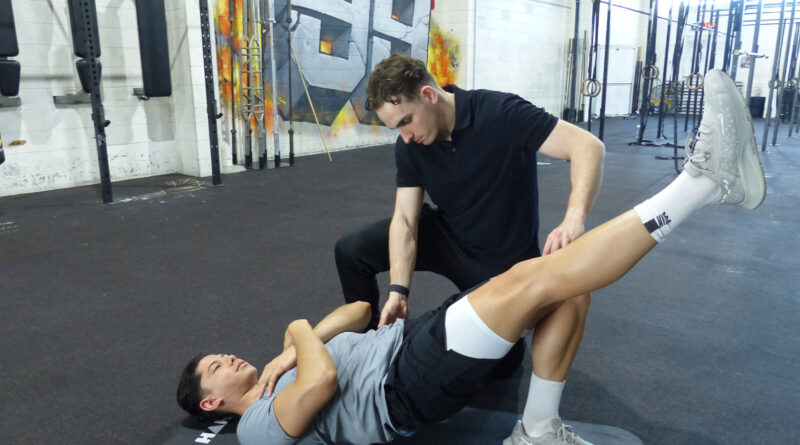Transform Your Recovery Journey with Physiotherapy and Physio Gym
Recovery from an injury, surgery, or chronic condition can feel like a long and difficult process. However, with the right approach, it doesn’t have to be a journey you face alone or in isolation. Physiotherapy, combined with the use of a physio gym therapy, is revolutionizing the way people recover and regain their physical health. These two powerful elements work together to not only speed up healing but also help individuals rebuild strength, mobility, and overall well-being in a structured, supportive environment.While traditional physiotherapy often focuses on manual therapies, electrotherapy, and therapeutic exercises, adding a physio gym into the mix introduces a modern, dynamic approach. A physio gym provides patients with a space designed to complement the work done during physiotherapy sessions by focusing on strengthening, endurance, flexibility, and mobility—fundamental components of a comprehensive recovery plan.In this article, we’ll explore how physiotherapy and a physio gym can work hand-in-hand to transform your recovery journey and help you achieve a successful and lasting return to health.
What is Physiotherapy and How Does It Help?
Physiotherapy is a medical profession that focuses on diagnosing, managing, and treating physical impairments, injuries, and disabilities. A physiotherapist uses a variety of techniques, including manual therapy, exercise therapy, and modalities like heat, cold, or electrical stimulation, to alleviate pain, restore function, and improve movement.Physiotherapy is effective for a wide range of conditions, including musculoskeletal injuries, sports-related injuries, neurological disorders, post-surgical rehabilitation, and chronic pain management. It plays a pivotal role in the initial phases of recovery by focusing on pain reduction, restoring basic movement, and improving strength.
Introducing the Physio Gym: The Next Level of Rehabilitation
While physiotherapy forms the foundation of rehabilitation, a physio gym provides a complementary, active space where patients can progress beyond the initial stages of recovery. A physio gym is equipped with specialized equipment and exercises designed to rebuild strength, improve flexibility, and restore overall functional capacity in a controlled and monitored environment.The difference between a traditional gym and a physio gym lies in the focus on rehabilitation. While a gym might provide general fitness equipment for building strength and endurance, a physio gym is designed to aid in recovery by providing specific tools that cater to the needs of injured or recovering individuals.
How Physiotherapy and Physio Gym Work Together
The combination of physiotherapy and a physio gym offers an integrated and holistic approach to recovery, maximizing the benefits of both modalities and ensuring that patients achieve the best possible outcomes.After physiotherapy has helped manage pain and restore basic mobility, the next phase of recovery typically involves strengthening the muscles that support the injured area. The physio gym provides the ideal environment for this. Under the guidance of a physiotherapist, patients can begin resistance training with tailored exercises that rebuild muscle strength, prevent atrophy, and improve stability.The progressive nature of strength training in a physio gym ensures that patients start with low-intensity exercises and gradually increase resistance as their strength improves. This allows for safe and effective recovery while avoiding overexertion or injury.
Restoring Functional Movement and Mobility
Once pain is under control and strength has been improved, it’s time to focus on restoring functional movement. In a physio gym, physiotherapists incorporate functional exercises that simulate everyday activities, such as bending, lifting, walking, and reaching. These exercises enhance coordination and improve the patient’s ability to perform regular tasks with confidence.Flexibility and mobility exercises are also a key part of recovery. By using tools like foam rollers, resistance bands, and stretching mats, patients work on restoring range of motion and preventing stiffness in joints and muscles. These exercises are important for improving posture, preventing compensation patterns, and ensuring long-term mobility.
Personalized Rehabilitation Plans
One of the greatest advantages of combining physiotherapy with a physio gym is the ability to create a personalized rehabilitation plan. Every patient’s injury or condition is unique, and physiotherapists tailor treatment programs to meet specific needs. Whether recovering from knee surgery, managing chronic lower back pain, or recovering from a sports injury, the treatment plan will be adjusted to suit the patient’s condition, capabilities, and goals.A physiotherapist’s expertise ensures that the exercises performed in the physio gym are appropriate for the patient’s stage of recovery, carefully balancing intensity, load, and recovery time. As the patient progresses, the physiotherapist will modify the program to ensure continual progress without risking overexertion. Rehabilitation can be a challenging and sometimes frustrating journey. One of the advantages of integrating physiotherapy with a physio gym is the added motivation and accountability it provides. Patients are more likely to stay committed to their recovery plan when they can see their progress firsthand in a well-equipped, supportive environment. The presence of physiotherapists in the gym offers encouragement, ensures proper technique, and makes the process more engaging and interactive.
Conclusion
Your recovery journey doesn’t have to be one-dimensional. By combining the targeted healing of physiotherapy with the dynamic, strength-building approach of a physio gym, you can achieve a faster, more efficient recovery and regain a higher level of physical function. This modern approach to rehabilitation offers a comprehensive, well-rounded path to healing—helping you not just recover, but thrive in your physical health.




